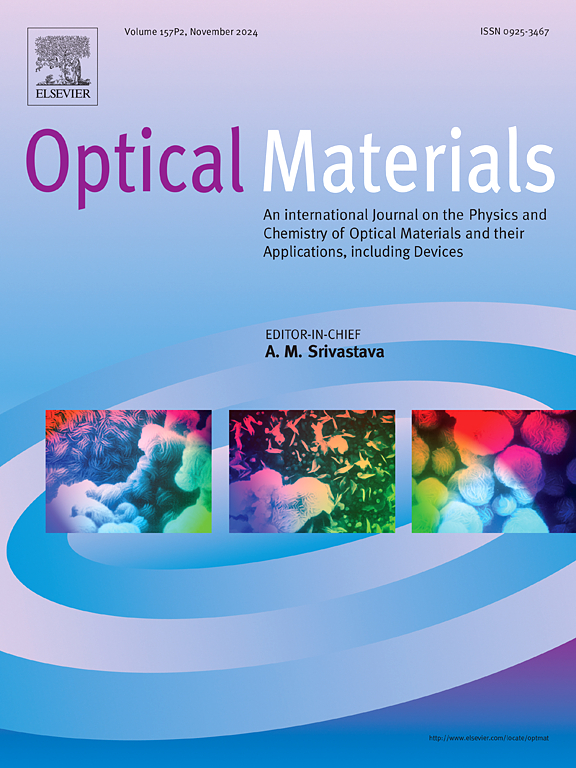Rice husk-based silica: A structural and optical study of xerogel, amorphous, and crystalline phases
IF 3.8
3区 材料科学
Q2 MATERIALS SCIENCE, MULTIDISCIPLINARY
引用次数: 0
Abstract
This study reports the xerogel silica fabrication derived from rice husks via the sol-gel route, which was continued with conventional calcination to produce both amorphous and crystalline phases. The primary objective is to elucidate the relationship between their structural characteristics and optical properties, analyzed by adequate analytical procedures. The xerogel and amorphous phases exhibited many structural defects, characterized by an amorphous framework featuring n-membered rings (n = 3 or 4) and a non-solid morphology alongside an elevated specific surface area, with the xerogel notably enriched in silanol groups. In contrast, the crystalline phase exhibited a well-ordered structure predominantly composed of cristobalite and tridymite, characterized by solid morphology and the lowest structural defects. Structural defects and silanol groups are critical for forming emission centers, leading to significantly higher emission intensity in the xerogel compared to the amorphous and crystalline phases. The xerogel and amorphous phases exhibit maximum emission within the blue spectral region, whereas the crystalline phase shows its peak emission in the green spectral region. The observed shifts in emission peaks are likely influenced by the number of defects that act as emission centers within or on the surface of the samples. Additionally, variations in emission intensity correlate with significant differences in lifetime measurements, recorded at 392.37 ns, 4.08 ns, and 1.24 ns for the xerogel, amorphous, and crystalline phases, respectively.
稻壳基二氧化硅:静电凝胶、无定形和结晶相的结构和光学研究
本研究报道了以稻壳为原料,通过溶胶-凝胶途径制备二氧化硅干凝胶,并继续采用传统的煅烧方法制备非晶相和结晶相。主要目的是阐明它们的结构特征和光学性质之间的关系,并通过适当的分析程序进行分析。干凝胶和无定形相表现出许多结构缺陷,其特征是具有n元环(n = 3或4)的无定形框架和非固体形态,并具有较高的比表面积,其中干凝胶明显富含硅醇基团。晶相结构有序,以方英石和钇石为主,形貌坚固,结构缺陷少。结构缺陷和硅醇基团是形成发射中心的关键,导致与非晶相和结晶相相比,干凝胶中的发射强度明显更高。干凝胶和非晶相在蓝色光谱区表现出最大的发射,而晶体相在绿色光谱区表现出最大的发射。观察到的发射峰位移可能受到样品内部或表面作为发射中心的缺陷数量的影响。此外,发射强度的变化与寿命测量的显着差异相关,分别记录在392.37 ns, 4.08 ns和1.24 ns的干凝胶相,非晶相和晶体相。
本文章由计算机程序翻译,如有差异,请以英文原文为准。
求助全文
约1分钟内获得全文
求助全文
来源期刊

Optical Materials
工程技术-材料科学:综合
CiteScore
6.60
自引率
12.80%
发文量
1265
审稿时长
38 days
期刊介绍:
Optical Materials has an open access mirror journal Optical Materials: X, sharing the same aims and scope, editorial team, submission system and rigorous peer review.
The purpose of Optical Materials is to provide a means of communication and technology transfer between researchers who are interested in materials for potential device applications. The journal publishes original papers and review articles on the design, synthesis, characterisation and applications of optical materials.
OPTICAL MATERIALS focuses on:
• Optical Properties of Material Systems;
• The Materials Aspects of Optical Phenomena;
• The Materials Aspects of Devices and Applications.
Authors can submit separate research elements describing their data to Data in Brief and methods to Methods X.
 求助内容:
求助内容: 应助结果提醒方式:
应助结果提醒方式:


